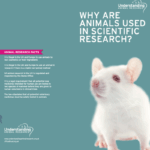Animal cruelty represents a pockmarked tapestry within the fabric of societal ethics. The evolution of animal welfare legislation, particularly the classification of cruelty as a felony, embodies the gradual realization of our shared responsibility for the voiceless. Legislative milestones have paved the way for greater protection, akin to a fortress wall built over time to shield the more vulnerable members of our community.
In the annals of history, various cultures have exhibited a valuing of animals, yet cruelty was often met with leniency. It wasn’t until the mid-19th century that the legal landscape began to shift, signaling the dawn of a new era in animal rights. The Royal Society for the Prevention of Cruelty to Animals (RSPCA) was founded in 1824 in England. This seminal organization galvanized public interest and laid the groundwork for legislative change. However, it would take several decades for similar laws to flourish across the Atlantic.
In the United States, the tides began to turn with the establishment of the American Society for the Prevention of Cruelty to Animals (ASPCA) in 1866. This watershed moment was a clarion call for humane treatment and unleashed a wave of activism that spilled into the legal realm. The founders understood that the heart is often swayed by visuals of suffering. Thus, they documented atrocities inflicted upon animals and turned them into rallying cries for reform. Their efforts slowly began to bear fruit as more states witnessed the introduction of anti-cruelty laws, although the parameters varied widely.
The first state to codify its anti-cruelty stance was New York in 1867, effectively making animal cruelty a misdemeanor. While this was a significant step forward, the designation of cruelty as merely a misdemeanor belittled the issue, relegating it to a secondary concern in the eyes of the law. Just as a fragile sapling strives to become a towering oak, public consciousness was in turmoil, yearning for more robust protections.
Throughout the late 19th and early 20th centuries, many states followed suit. However, it wasn’t until the 1970s that the landscape began to crystallize into something more formidable. Maine was the first state to enact felony-level penalties for extreme cruelty in 1976. This marked a pivotal metamorphosis in the conceptualization of animal rights, defining cruelty with a severity that echoed the moral repugnance surrounding the behavior.
Following Maine’s lead, other states began to reevaluate their statutes, each adopting their own versions of felony status for animal cruelty. In the years that followed, significant developments were made across varied jurisdictions. The introduction of the Animal Welfare Act in 1966 provided a skeletal framework for the humane treatment of animals in research, exhibition, and transport. However, it was largely focused on specific species, creating gaps in its application. The lack of uniformity in laws remained a thorn in the side of animal advocates, akin to a puzzle with missing pieces that hindered clear visibility of a complete picture.
The late 20th century witnessed a gradual expansion of public discourse surrounding animal rights and welfare. Advocacy groups burgeoned, enacting campaigns that radically redefined public perception. In 2006, the Animal Welfare Act was amended to include provisions that allowed for the designation of animal cruelty as a felony in some states. This marked a critical turning point in comprehensive animal protection legislation. It transformed what was once an afterthought into a fierce legislative agenda, a testament to the evolution of societal values.
The journey toward fully legislating animal cruelty as a felony continues to this day. Each state has the autonomy to shape its laws, creating both a patchwork of protections and a slapdash approach to the issue. States such as California and Illinois have enacted stringent measures, offering felony charges for severe animal abuse. The variances highlight the ongoing struggle; while some states have climbed heights of progressive legislation, others remain mired in the mire of outdated beliefs.
As of now, nearly 50 states have animal cruelty laws on their books; notably, suicide by starvation, abandonment, or torture is classified under felony offenses in many jurisdictions. Yet, it is the disparity in enforcement that speaks volumes about our moral compass. Every act of cruelty echoes a plea for change, a cry from the furthest reaches of our populated metropolises down to the solitary corners of rural farmlands.
Public perception plays an essential role in shaping the future of animal cruelty laws. The shift from viewing animals as mere property to recognizing them as sentient beings reflects an intricate lattice of moral evolution deeply interwoven into our societal understanding. This philosophical transformation is crucial; it addresses the vital question of whether legal systems will rise to protect those who cannot advocate for themselves. Progress will continue only as long as the narrative surrounding animal welfare remains prominent.
Despite formidable strides, it is evident that a resounding gap exists between legislation and transformations in individual behavior. Ethical reforms must be accompanied by educational initiatives that cultivate empathy and understanding. The greatest victories are not only found in the hallowed halls of legislature but also in the hearts and minds of the populace. A society that values compassion for its diverse inhabitants, both human and non-human, is bound to flourish.
As we gaze toward the horizon of the future, it is vital to remember that the legislative milestones surrounding animal cruelty are not merely markers on a timeline. They are embers igniting the broader discourse on compassion, ethics, and responsibility. The challenge lies within our collective grasp, as we endeavor to nurture an unwavering commitment to safeguarding the creatures that share our planet. The journey will undoubtedly continue, but the path forward is illuminated by the courage, steadfastness, and collective action of those who refuse to turn a blind eye.






